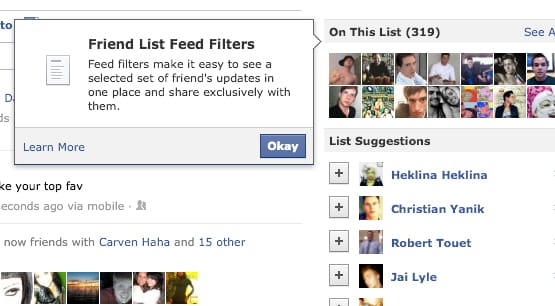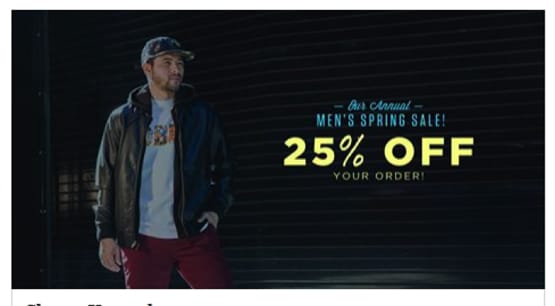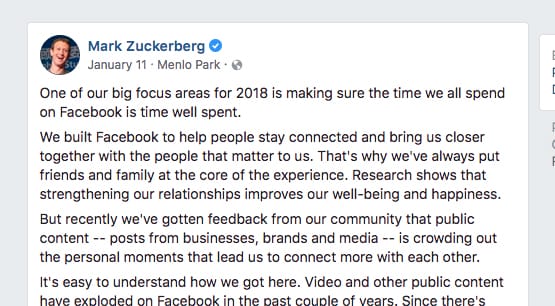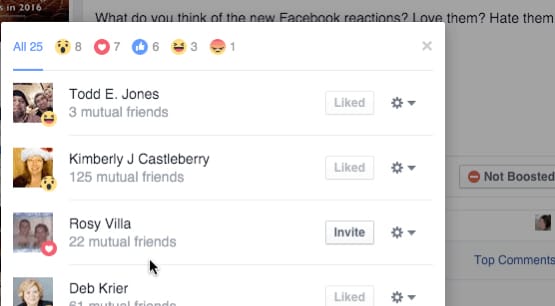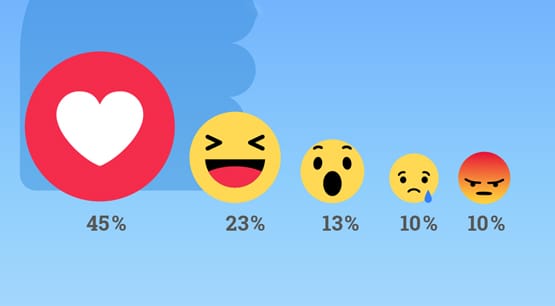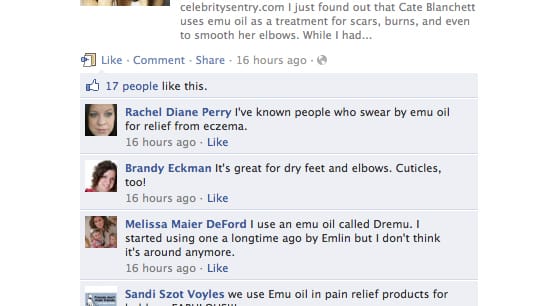What is The Effect of Facebook Reactions on Your Reach?

2018 is proving to be an interesting year for Facebook marketers, and not in a good way. In fact, a lot of advertising agencies are calling a January algorithm update the “nail in the coffin” for certain types of marketing. I’m not so pessimistic, but there’s no denying that certain changes are going to make it harder for certain businesses going forward.
I bring this up because part of the recent change involves the weight of reactions on posts, and it’s worth giving a larger context to the situation.
The New News Feed
Facebook’s announcement in early January of this year is in many ways a reaction to the way Facebook has been used and abused for propaganda and the spread of fake news, racism, bullying, and harassment.
Facebook has decided to try to bring their platform a little further back towards what it was initially intended to be: a network where friends and family can keep in touch with each other.
A huge amount of criticism of Facebook was simply that it seemed to give preference to all sorts of crap and leave friends and family behind. How often do you see posts from brands, posts from clickbait accounts, and posts from various random ad companies instead of posts from friends and family? How often have you read stories about someone not seeing that one of their friends was sick or even died, without them ever knowing about it?
Part of this is simply due to the presence of marketers. No matter what the situation is or what the site is, if marketers have tools to access it that normal users do not, marketers are going to try to dominate the setting. It’s just a fact of life. Every marketer wants their share of attention, and they’ll compete to do it, using the most optimized techniques they can find. Friends and family don’t know any of these optimization strategies and don’t have – or want – the tools to make sure their posts are visible. Like, can you imagine your grandmother trying to use some Facebook marketing dashboard just to reach her grandkids? It’d be insane.
Even if individual brands post at a reasonable pace, so as not to drown out the feeds of other users, the sheer number of brands is going to cause a problem. The more competition there is, the less reach each brand gets. They want their reach to stay high, so they take action, and the arms race begins. Whoever wins, the average organic user loses out on their friends and family content.
Zuckerberg posted an update about his intentions for the news feed in coming months, much of which has at least started to be implemented. The intent is to shift the balance away from organic posts from brands and companies, and back towards posts from friends and family.
What this means to a brand is that organic reach is going down. It’s declining rather steeply, and it’s not likely that Facebook will roll back the changes. Organic reach declines, which means everyone needs to focus more on paid advertising to get their exposure. That, and they need more high quality organic content, rather than the higher volume, lower quality content that has been successful thus far.
Of course, more people putting more time and money into paid advertising means more competition for those ad slots, which means higher costs at the ad auctions, so that hurts brands as well. It’s no surprise that a lot of marketers, particularly those who were abusing gray hat techniques, straight-up spam, or the cheapest possible ads on a tight budget are crying apocalypse.
Changing Algorithms
There’s more to the changed algorithm than just a minus priority modifier on brand pages and a plus priority on posts from friends and family. I covered it somewhat in this post, and I’ll go over it somewhat again here.
The first thing Facebook did is divided up various forms of interaction and engagement into two categories. These are Active and Passive interactions.
Passive interactions are the basic level interactions that take virtually no effort on the part of the user. The casual like, the website click, these are engagements that don’t further encourage engagement. They’re really basic and really quite useless, and Facebook has further reinforced this. The time a user spends reading a post, as well as the time the post was made are also passive interactions that are being devalued.
On the other side are Active interactions. Sharing posts, leaving comments, and replying to comments are all active interactions, because they encourage further interactions from the user, the brand page, and other users. Sharing a post over messenger, as well as the judgment that the post is informative, are value indicators that are increased as well.
Facebook has essentially decided that active interactions are the only valuable kind of interaction, while passive interactions are only slightly beneficial. They’ve devalued the passive interactions and increased the value of active interactions, all while decreasing reach for pages in general.
Reactions In Particular
To focus on the topic of this post for a moment, let’s talk about Facebook reactions. Formerly just the Like button, Facebook rolled out different forms of reaction some time ago, as a way to give users more sympathetic options without having an actual dislike button. These reactions were never counted differently from one another, though. A like versus a crying face versus a heart were all identical as far as the algorithm was concerned, and they’re still identical today.
The problem with giving users more options is that it gave black hat marketers more options as well. Almost immediately, you started to see posts where you were asked to vote for one of several options in an image or, later a live video, with different reactions counting as different votes.
Facebook quickly made this against their terms of service, calling it out specifically as a banned technique, but of course that hasn’t stopped everyone. You still see these issues today, though a lot less often than you used to.
The fact is, though that Facebook has had problems with people abusing reactions. Even if they didn’t make this broad, sweeping change, reactions on their own have been steadily losing value over time. Today, an individual reaction is worth very little.
Reactions and Reach
All of this is meant to give you context for one conclusion: reactions increase your reach, but only by a very minimal amount.
From now and moving forward, Facebook is making individual reactions worth very little. You can, potentially, get a lot of likes and get a lot of reach out of those likes. A like also is still an indication that the user is interested in your content, and will make that user slightly more likely to see your content in the future. The difference is, that boost is a lot more miniscule than it used to be, and even before it was fairly minimal.
The Future of Reach
Moving forward today, you can make organic posts, and you can boost posts into ads. If you’re boosting posts as advertising, you have all of the same requirements and recommendations as before.
To wit:
- Make sure your targeting is as accurate and as narrow as possible for your intended audience. The more people you don’t intend to reach who are in your audience, the more you will be spending without the sort of organic conversions or other benefits you want to get.
- Make sure your posts are as highly valuable as you can make them. The more pithy or less valuable the post, the less exposure it’s going to get. You want your posts to be attractive, for all of the reasons you need your organic posts to be attractive, as I’ll mention below.
- Don’t be afraid to bump up your bid to get the traffic you desire, but try to avoid bidding to be #1 in every case. Plenty of other people are willing to waste more money than you have and you’re not likely to actually get that much benefit out of it.
- Always run split tests for your ads. Stale ads and ads that haven’t been refined are going to eat up exposure and budget that you could otherwise be sending to even better ads. The more tests you run – with representative samples of your audience – the better.
This post isn’t about ads, though, so let’s talk about organic posts.
Since organic posts are going to be hit the hardest, you need to work the hardest to maintain your reach. You’re still likely to see a drop, but if you’re diligent, you can keep that drop from being too bad.
In the future, everything will revolved around active interactions. Specifically, in the case of brand organic posts, this means comments and shares. Reactions will help, so don’t discourage them, but if you’re given the choice whether to focus on reactions or comments, choose comments every time.
Comments and replies are going to be the most important kind of engagement for the foreseeable future. This means you need to encourage comments as much as possible, which in turn means you need to craft your posts in a way that encourages them. I recommend always asking questions, and making them as complex as possible to get people to answer in lengthier sentences. Don’t ask simple yes/no questions; those don’t encourage discussion.
Another important step you need to take is responding to comments. Any time anyone comments on your content, as long as it’s not a spam comment, respond. Even if all you’re doing is thanking them, it might spur on more conversation. Heck, a simple thanks is an opening for a follow-up. Someone says they like your product, ask them what they like about it the most. Follow up on criticism the same way.
You could even consider leaving spam comments, but I recommend still removing them. The slight boost of a spam comment as a comment in general isn’t going to outweigh the negative effect of the spam on people who would otherwise want to respond. It makes your page look unmoderated or inattentive, which is dangerous.
Encouraging shares is a good secondary goal. It’s hard to encourage shares without resorting to a lot of shady techniques, though, so about the best you can do is simply ask people to share.
You can also encourage users to set your page as “see first” using some call to action if you like. Those copy-pasted calls to action you often see aren’t going to cut it most of the time, simply because most people ignore them, but you can still attempt it if you desire. It probably won’t hurt, and anyone who does click that setting is going to at least see your posts more frequently than others. Since these are your most engaged users, you can also use this post in the comments to encourage further shares.
Oh, and to address the elephant in the room, no: I do not recommend buying reactions in an attempt to boost your reach. All you’ll do is mess with your audience demographics in your analytics, hurt your reach amongst people you care about, and get a number that went up a bit on your posts. You need relevant, active engagement, not reactions from a bunch of fake accounts.
Publish the best content you can, with as much of a focus on engagement as possible. Rely on advertising for your heavy calls to action and referrals to landing pages. Pay attention to what matters to your audience and address that content, rather than writing whatever seems to be trending. And, of course, ignore the techniques that Facebook tells you not to use, since they’re a lot more liable to hurt you now than they used to.




